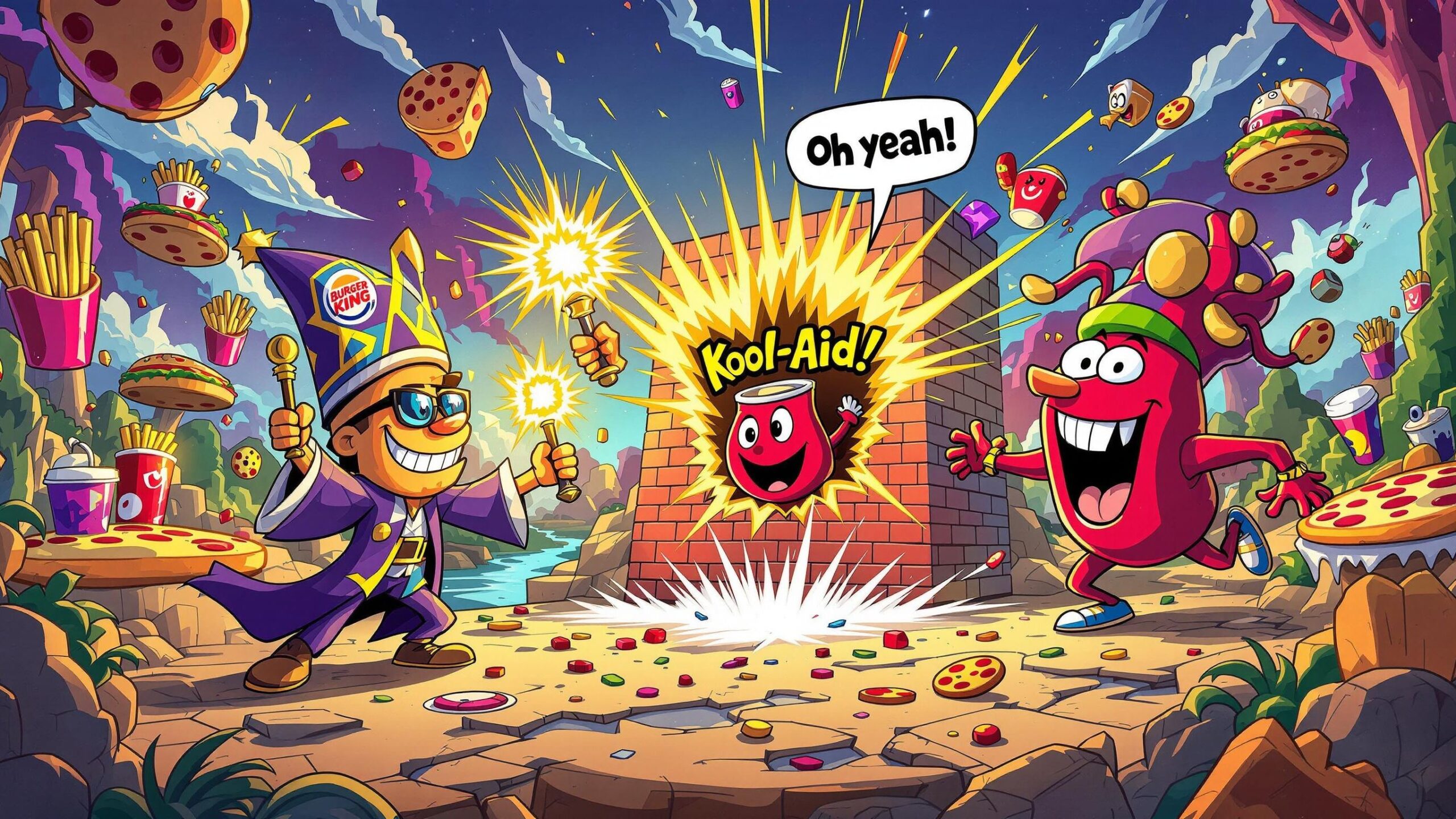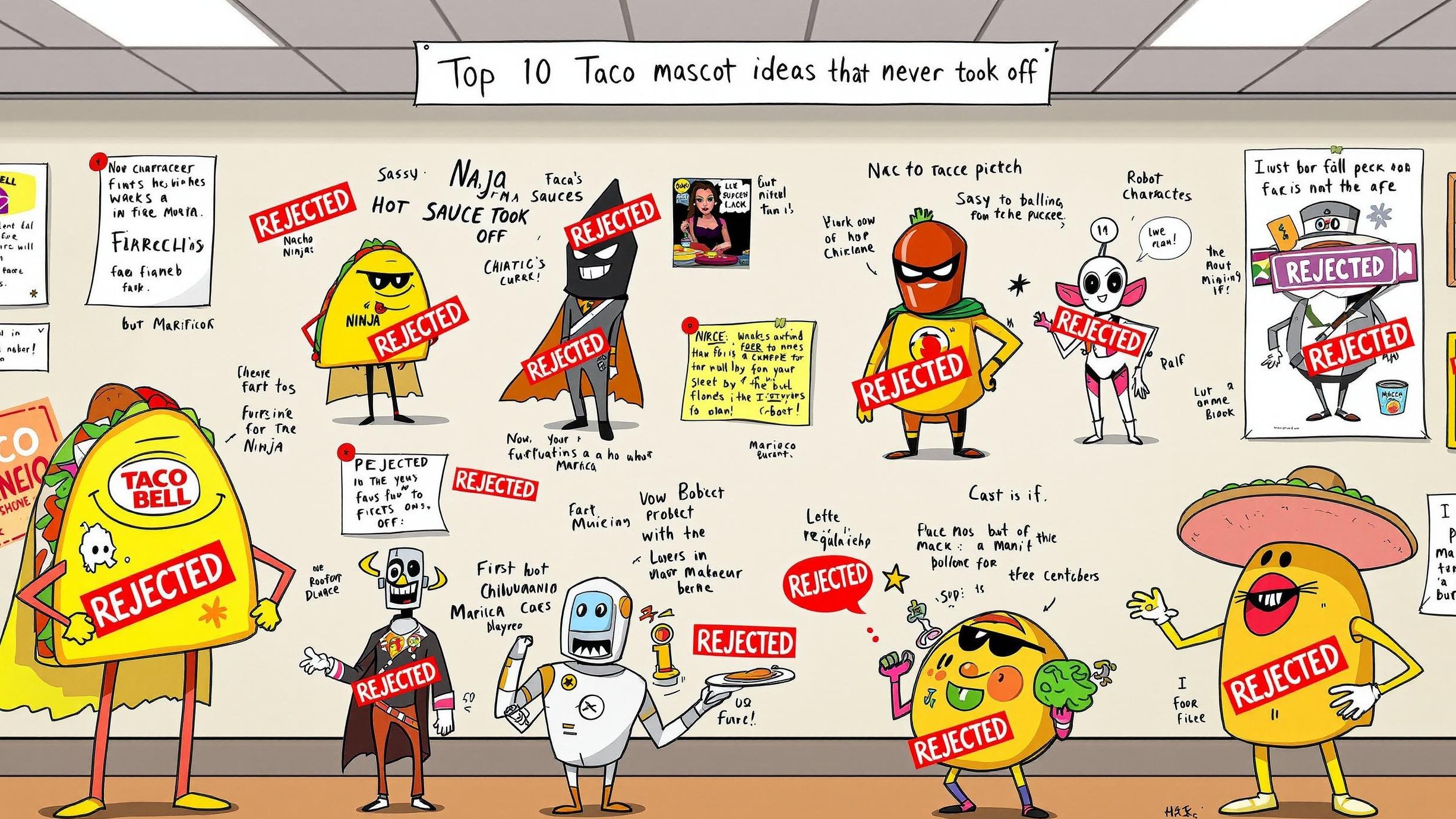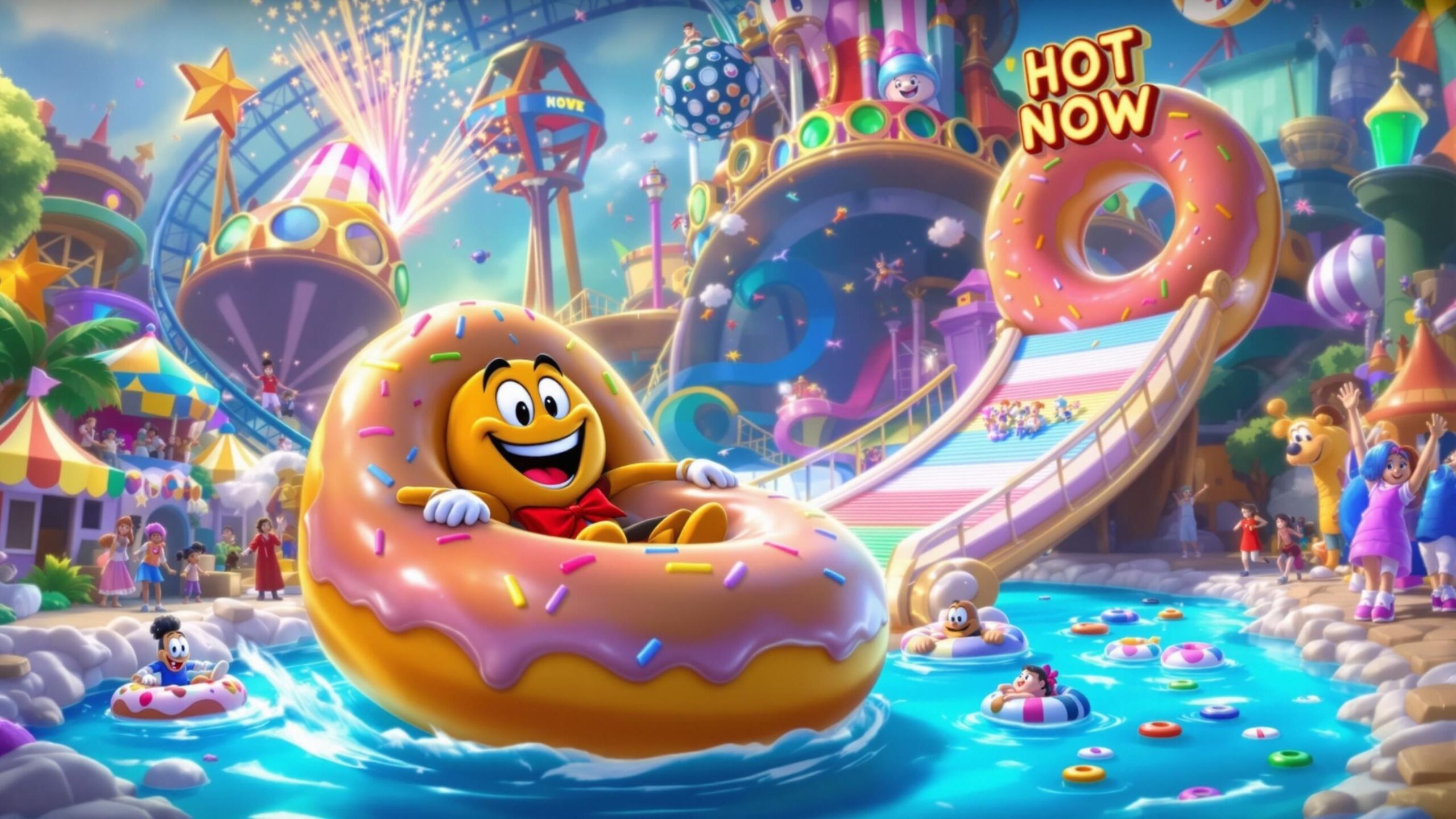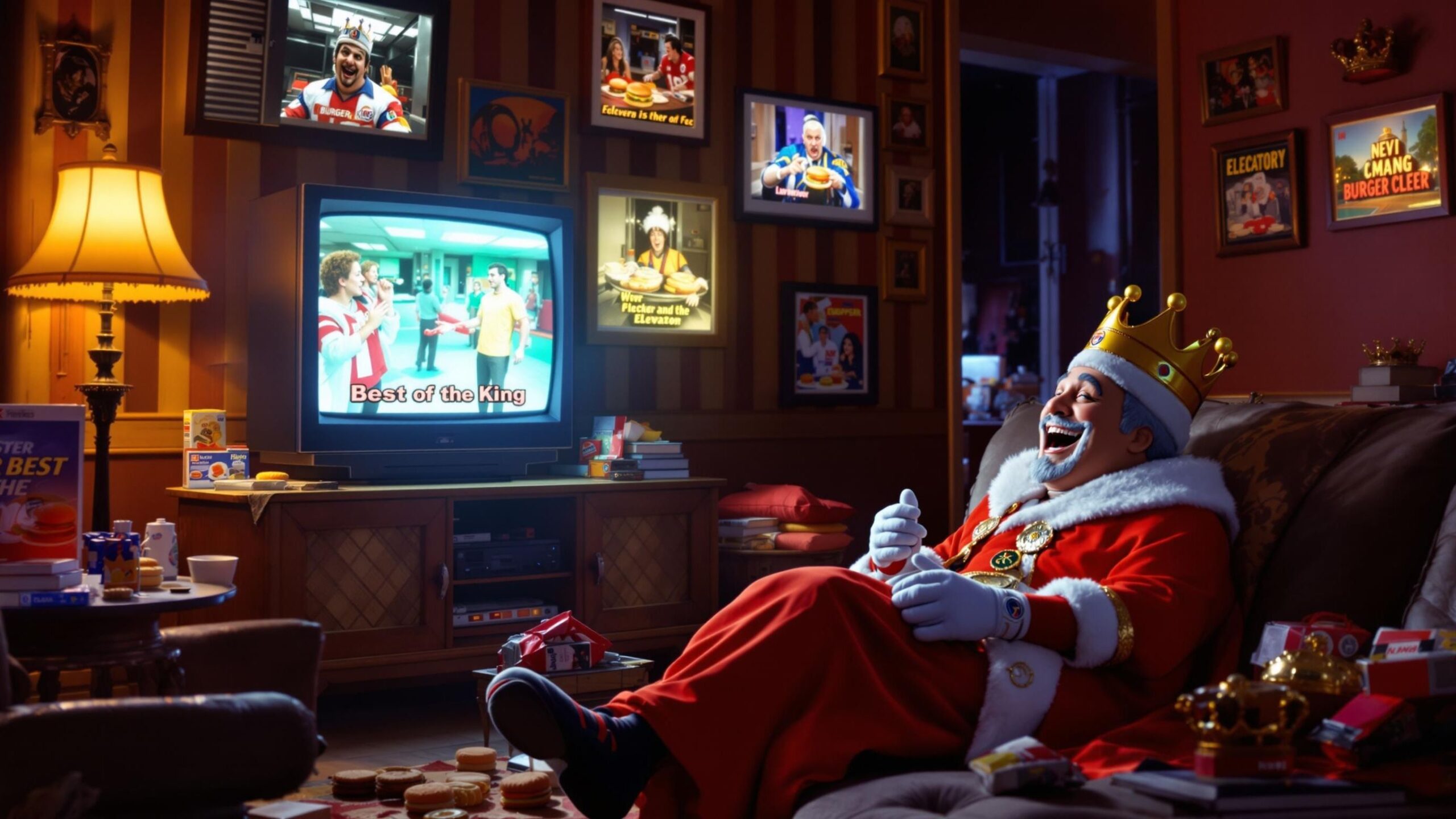Not every fast food mascot gets the spotlight—or the staying power—of Ronald McDonald or the Burger King. Some mascots burned bright and fast, vanishing from the public eye almost as quickly as they appeared. These forgotten icons were once center stage in commercials, on packaging, and in kids’ meal toys, only to fade away with changing trends, lawsuits, or brand overhauls. Whether charming, creepy, or downright strange, these mascots left behind memories that might just jog your nostalgia. Here are the Top 10 Forgotten Fast Food Mascots You Totally Missed.
#1: Mac Tonight
In the late 1980s, McDonald’s introduced Mac Tonight, a lounge-singing crooner with a crescent moon for a head and sunglasses permanently perched on his nose. Designed to promote McDonald’s dinner menu, Mac played jazzy piano tunes and serenaded customers with a smooth jingle: “It’s Mac Tonight.” Modeled after ‘50s lounge lizards like Bobby Darin and Dean Martin, Mac was surprisingly cool for a fast food mascot. His music videos were a visual feast of neon, saxophones, and surreal moonlit settings. However, his run was cut short after a lawsuit from Darin’s estate, claiming the use of “Mack the Knife” was unauthorized. Despite disappearing in the early ’90s, Mac Tonight left a bizarre legacy and cult following. He’s since reappeared in internet memes, with fans lovingly referring to him as “Moon Man”—though some unfortunate associations online have complicated that comeback. Still, the original Mac was all about style and smooth jazz beneath the golden arches.
#2: The Burger King Kids Club Gang
Long before fast food chains leaned into influencers and social media, Burger King had its own band of inclusive, colorful cartoon characters—the Burger King Kids Club. Debuting in 1989, this group of diverse kids represented different personalities and backgrounds, aiming to appeal to a broad young audience. The crew included Kid Vid (a tech-savvy gamer), Jaws (a sports enthusiast), Lingo (an artist), Wheels (a wheelchair user and mechanical whiz), and I.Q. (a brainy scientist), among others. They were ahead of their time in terms of representation and brand storytelling. Every Kids Meal came with themed toys featuring the gang, and TV spots made them feel like stars. But as the ’90s faded, so did the gang—eventually replaced by more generic branding and a focus on older demographics. These characters now live on mostly through collectors and nostalgic YouTube deep dives, but their spirit defined an entire era of kid-friendly marketing.
#3: Officer Big Mac
Before Grimace went full sweetheart and Mayor McCheese ruled McDonaldland, there was Officer Big Mac—a towering policeman with a hamburger head and a mission to keep order among the rowdy fast food characters. Introduced in the 1970s, Officer Big Mac was often seen chasing after the Hamburglar or trying to solve zany crimes. Dressed in a blue uniform and hat, his design leaned heavily into the “burger as head” theme that dominated McDonaldland. He was a staple in playgrounds—literally, as many McDonald’s restaurants had Officer Big Mac jail cells kids could crawl into. However, he quietly disappeared by the 1980s, phased out during McDonald’s brand consolidation. His absence left a hole in the original McDonaldland crew. While he might not have the fame of Ronald, Officer Big Mac’s charmingly odd design made him a symbol of a more imaginative fast food era.
#4: The Taco Bell Chihuahua’s Friends – Nacho and Doggie
While the Taco Bell Chihuahua dominated the ad campaigns in the late ’90s, few remember that he briefly had some sidekick mascots: Nacho and Doggie. These lesser-known characters were introduced during promotional runs and tried to expand the narrative world around the Chihuahua’s antics. One campaign even featured a doggy love triangle, complete with slow-motion walks and spicy food metaphors. However, none of these side characters stuck. Overshadowed by the sheer charisma and viral appeal of the main Chihuahua, Nacho and Doggie quietly vanished. Today, even longtime fans barely remember these additions, but they reflect Taco Bell’s once-bold experimentation with extended mascot universes. Their brief appearances are the fast food version of deleted scenes—fun, weird, and almost lost to time.
#5: Speedee
Before the golden arches and before Ronald McDonald, McDonald’s had a different face of the brand: Speedee. Debuting in 1948, Speedee was a cartoon chef with a giant hamburger for a head, symbolizing the company’s then-revolutionary “Speedee Service System.” He was cute, cheerful, and appeared on signage, packaging, and even architecture. But in 1962, McDonald’s began transitioning to the now-iconic golden arches as the primary symbol and retired Speedee to avoid confusion with the newly introduced mascot, Ronald McDonald. Today, most people have no idea McDonald’s ever had a mascot before Ronald. However, vintage enthusiasts and brand historians regard Speedee as a forgotten pioneer—one who laid the groundwork for the fast food iconography that followed. Occasionally, McDonald’s nods to him in throwback promotions, but for the most part, Speedee’s time in the spotlight has been eclipsed by the clown who came after.
#6: The Arby’s Oven Mitt
In the early 2000s, Arby’s decided to give their marketing a quirky twist by introducing an animated oven mitt as their mascot. Voiced by Tom Arnold, the Oven Mitt had wide googly eyes and a big personality, serving as the enthusiastic and oddly passionate spokesperson for roast beef sandwiches. He starred in several commercials, cracking wise about curly fries, touting the meats, and trying to win over customers with charm. The idea was simple: put a kitchen staple front and center to emphasize Arby’s focus on “freshly prepared” food. While some found him funny and unique, others found the character awkward or forgettable, and the campaign didn’t quite stick. Within a few years, Arby’s quietly phased out the Oven Mitt, switching to more direct messaging and eventually the now-famous “We Have the Meats” campaign. Today, he’s barely remembered, a victim of branding that never quite found its identity—but for a brief moment, a talking oven mitt was the voice of a sandwich empire.
#7: Mr. Delicious from Rax Roast Beef
In one of the strangest marketing moves of the 1990s, Rax Roast Beef introduced Mr. Delicious—a monotone, middle-aged man with a cynical sense of humor and a dry delivery. Dressed in a suit and often holding a martini, Mr. Delicious would address the audience directly, lamenting his life’s disappointments and pitching Rax as an escape from the chaos. The campaign was an intentional pivot to appeal to adults, but it backfired spectacularly. Mr. Delicious was too bleak, too sarcastic, and wildly out of step with what fast food customers expected. Commercials featuring him aired in 1992, and within a year, Rax saw a major downturn. Some credit Mr. Delicious as the straw that broke the brand’s back. Today, he’s often cited in ad industry retrospectives as a cautionary tale—but his weird, depressive vibe has earned him a cult following among fans of retro fast food weirdness.
#8: Cornelius Rooster from Kellogg’s Corn Pops
Though technically representing a cereal, Cornelius “Corny” Rooster was frequently used in cross-promotions at fast food chains offering breakfast, especially in the 1980s and 1990s. With his bright green and red feathers, Corny would appear on cups, tray liners, and toy premiums in kids’ meals, especially in partnerships with brands like Burger King. Corny was always peppy and upbeat, often crowing at the start of commercials or cheerfully proclaiming how great breakfast would be with Corn Pops. However, the character slowly faded from the spotlight as Kellogg’s and its partners focused on more modern, edgy branding. These days, Corny is absent from boxes and nearly forgotten in marketing. He’s a great example of a mascot who bridged grocery stores and fast food trays—only to vanish when nostalgia stopped selling and sleek minimalism took over.
#9: Domino Man
Before the Noid became Domino’s Pizza’s iconic mascot, there was Domino Man—a character from an obscure 1983 arcade game of the same name, sponsored loosely by the pizza chain. He was a squat, mustachioed man who set up dominoes in increasingly difficult levels while avoiding hazards like bees, bullies, and a walking hand. Though not heavily featured in ads, Domino Man made occasional appearances in promotional items and early Domino’s print materials. His existence is so obscure that many Domino’s employees have never heard of him, yet collectors and retro game fans still celebrate his quirky design and role as an early mascot prototype. He was eventually replaced by more mainstream characters, but as a relic of early fast food experimentation in arcade tie-ins, Domino Man remains a fascinating footnote in mascot history.
#10: Happy Star from Carl’s Jr. and Hardee’s
Happy Star, the smiling, five-pointed mascot of Carl’s Jr. and Hardee’s, is still technically around—he’s on signs, packaging, and cups—but his days as a character are long gone. In the ’80s and ’90s, Happy Star was an animated personality. He would appear in commercials, bounce around menus, and even “talk” to customers about burgers and milkshakes. He was especially prominent in kids’ meal toys, designed to compete with McDonald’s Happy Meal offerings. Over time, however, Carl’s Jr. rebranded itself toward a more mature, edgy image (remember those controversial ads with bikini models and giant burgers?), and Happy Star quietly disappeared as a character. Though he still represents the brand visually, he’s no longer treated as a mascot with a voice or personality. For those who grew up with the cheerful star talking back from their paper tray liner, it’s a quiet goodbye to a once-beloved symbol of happy, greasy indulgence.
These forgotten fast food mascots were once at the forefront of advertising, winning over kids, charming adults, and trying to stake their claim in a crowded market. Some were ahead of their time—diverse, inclusive, or surreal—while others were simply too strange or specific to last. Though they may no longer grace TV screens or Happy Meal boxes, these characters are immortalized in vintage merchandise, retro commercials, and the memories of anyone who grew up during their brief heyday. In a world where branding is constantly evolving, these mascots remind us that sometimes the weirdest, most short-lived icons leave the strongest impressions.




